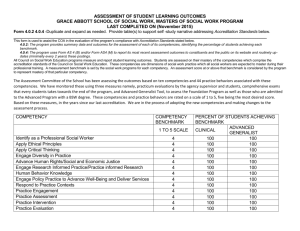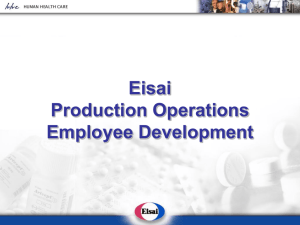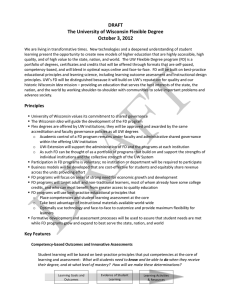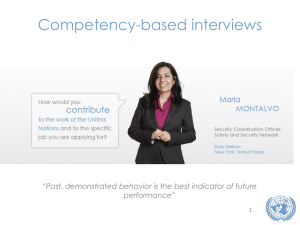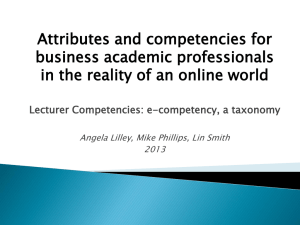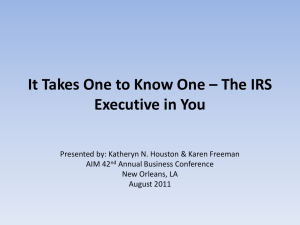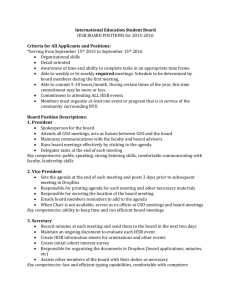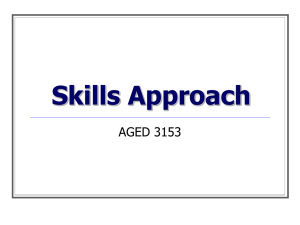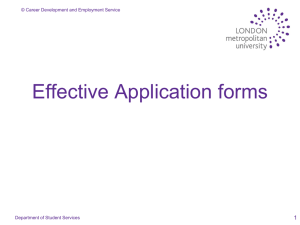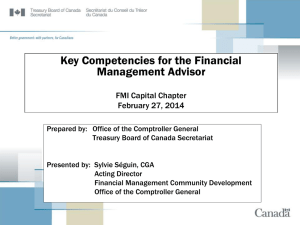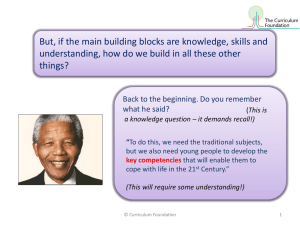direct assessment of student learning
advertisement
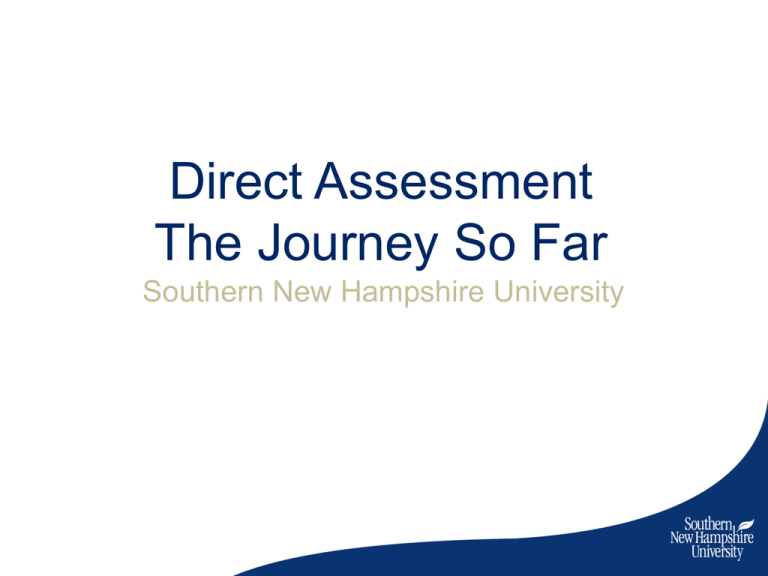
Direct Assessment The Journey So Far Southern New Hampshire University Southern New Hampshire University Panelists Cathrael Kazin, Chief Academic Officer, College for America Stacy Sweeney, Chief Administrative Officer Beverly Cotton, Assoc. VP One Stop/Enrolled Student Services Suzanne Faulkner, Business Analyst 2 What is “Direct Assessment”? Provision of Title IV of the Higher Education Act of 1965 (HEA) Provides that instructional programs that use direct assessment of student learning, or that recognize the direct assessment by others of student learning, in lieu of measuring student learning in credit hours or clock hours, may qualify as eligible programs [to award federal financial aid] if the assessment is consistent with the institution’s or program’s accreditation. 3 A Few Things to Notice… Two routes: Direct assessment or recognition of direct assessment by others “In lieu of measuring student learning in credit hours or clock hours” BUT the application must specify the equivalent number of credit or clock hours Approval by the Department contingent on approval by accreditor 4 Why Pursue “Direct Assessment”? 5 Commitment to access Foster connections between college and the workplace Need: Most students are working adults on the low end of the wage skills Appropriateness: College for America is a direct assessment program Opportunity Provide clear evidence about what college graduates know and can do College for America at Southern New Hampshire University (CfA) AA in General Studies degree No courses Students earn the degree when they have mastered 120 competencies No grades Students either master a competency or have “not yet” mastered Students move at their own pace (within limits) 6 How Do Students Demonstrate Mastery? Students demonstrate mastery by completing Projects Authentic, engaging tasks Involve multiple competencies from different areas Projects come in different sizes Each Project is evaluated by a trained Reviewer using an analytic rubric Rubrics are binary (“yes” or “not yet”) with multiple criteria Students can revise and resubmit until all criteria satisfied Once a student satisfies all rubric criteria, s/he has demonstrated mastery of the associated competencies 7 Where Are The Faculty? “The student must interact with the faculty member on a regular and substantive basis to assure progress within the course or program.” 34 CFR 668.10(a)(iii) Traditional faculty role has been disaggregated and redistributed: 8 Traditional Role CfA Support/advising Learning Coaches Curriculum development Instructional designers Delivery Curated resources Assessment of student work Trained Reviewers Challenges of “Direct Assessment” How do we “translate” non-credit hour programs into credit hour equivalents in a way that: 9 Fits with other provisions of Title IV Reduces potential for fraud and abuse Does not simply replicate the credit hour system Works with existing procedures and software Questions? 10 Title IV Eligibility Partnership With the Department of Education 11 Financial Aid Systems All standard eligibility requirements apply Full-time status as described by 34 CFR 668.10 Full-time/half-time equivalency Cost of Attendance Non-standard Term (12) 6-month periods Standard eligibility for disbursement criteria applicable 12 Enrollment Monitoring Required for proper Pell Grant disbursement Less than ½ time, half-time, ¾ time & full time Necessary to measure continued engagement in competencies Needed to determine eligibility for subsequent disbursements “In progress” competencies not considered for NEW disbursements Crucial for accurate R2T4 calculations Essential for SAP completion rate measurement 13 Satisfactory Academic Progress (SAP) Measured after every 6-month term To provide a one term probationary period for unsuccessful students No GPA requirement Grade scheme • 75% completion rate requirement Maximum Timeframe 150% of published length of program Not allowed to transfer credits from other programs No repeat courses • Appeals 14 Withdrawals Withdraw from program not competencies Official vs. Unofficial Drops vs. withdrawals Documented Academic Activity Return to Title IV (R2T4) Refund of cost within first 2-week period 15 Questions? 16




